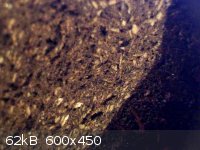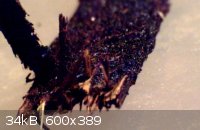stupor mundi
Harmless

Posts: 1
Registered: 27-2-2011
Member Is Offline
Mood: No Mood
|
|
Charring of Lignocellulosic composites
Hi forum!
I'm preparing a number of small composite samples, bamboo, wheat straw strands/fibers with homemade bio-based resins. As a control with proper
commercial resin, I've made samples with resorcinol-formaldehyde resin and R-F combined with polyvinylbutyral as toughener.
I've tried tannin/hexamine earlier (with no success), and am now attempting resin from straw hemicellose acid hydrolysis to pentoses, which, when
curing, are meant to convert to furfural which is then meant to resinify with the lignin present. My goal is resin for a fairly small thermoset
prepreg tape(about 2mm X 15mm in section).
Various literature is available, "binderless boards", "steam bonding", typically high pressures are used (hydraulic presses) and temperatures near
200C. Some of the literature assumes furfural / polyphenol reactions, others say glucosides are formed. They all tend to claim that, given
sufficiently high temperature, waterproof bonds are formed.
I've managed to extract a chocolate-like "resin" from wheat straw using acid hydrolysis at/below 100C (added a little urea in case some early furfural
is freed), and have prepared bamboo-roving prepregs and wheat straw / resin blobs, and cured those at various temperatures.
After initial water loss and cure around 100C samples seemed mechanically sound, but probably not at all waterproof (I'm guessing the "resin" at this
stage will be a kind of Xylose caramel). Curing at around 140C already results in terrible charring, the resin becomes extremely brittle char and the
fiber is equally degraded and becomes brittle. This also occurs when the samples are wrapped in Al foil to protect them from oxygen.
The larger samples (straw-resin blobs) were less degraded than the thin prepreg. Is it maybe remaining steam that protects them from charring as much?
This would maybe explain why in a proper hydraulic press, even at 200C, no charring occurs.
In the application I'm aiming for (3D printer), applying pressure is not an option, so I'm wondering if there is any way to utilize that attractively
cheap and green "binderless board" chemistry by pre-reacting sugars/hemicelluloses and lignin (maybe add some tannin) in the presence of steam at
sufficiently high temps to form furfural, apply the resulting resin to prepreg, and then cure at lower temps.
I've looked around on the web for autoclaves, they seem scary expensive (and scary big, scary heavy etc.). A pressure cooker I believe gives up to
130C (with water), I'm contemplating buying one. Is it futile to try to get furfural at that temp?
My tests with tannin as binder also led to brittle char at temps far below the temps described in the literature for boards. Am keen on any advice,
especially regarding whether my interpretation that the missing steam is cause of the charring is correct.
  
|
|
|
Eclectic
National Hazard
   
Posts: 899
Registered: 14-11-2004
Member Is Offline
Mood: Obsessive
|
|
You can make furfural from ground corncob and dilute sulfuric acid at no overpressure....it steam distills.
http://www.orgsyn.org/orgsyn/orgsyn/prepContent.asp?prep=cv1...
|
|
|
bbartlog
International Hazard
    
Posts: 1139
Registered: 27-8-2009
Location: Unmoored in time
Member Is Offline
Mood: No Mood
|
|
What temperature control / heating do you use? First suspicion on hearing that small samples char and larger ones don't is simply that the former
achieved higher actual temperatures; for example if the prep is done in a plain old electric oven then you have pretty high potential for overshooting
/ temperature spikes.
Second, what sort of neutralization or workup do you do after producing the resin via acid hydrolysis? I'm just wondering whether acid condensation
(or oxidation, I guess, if you're using sulfuric) reactions driven by residual acid could account for your results. Strong acid+sugar will generally
eventually make a horrible black mess, and rather quickly at elevated temperatures, so removing acid residues from the resin would be critical...
|
|
|
|